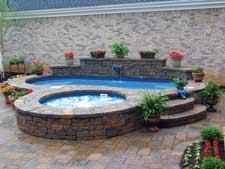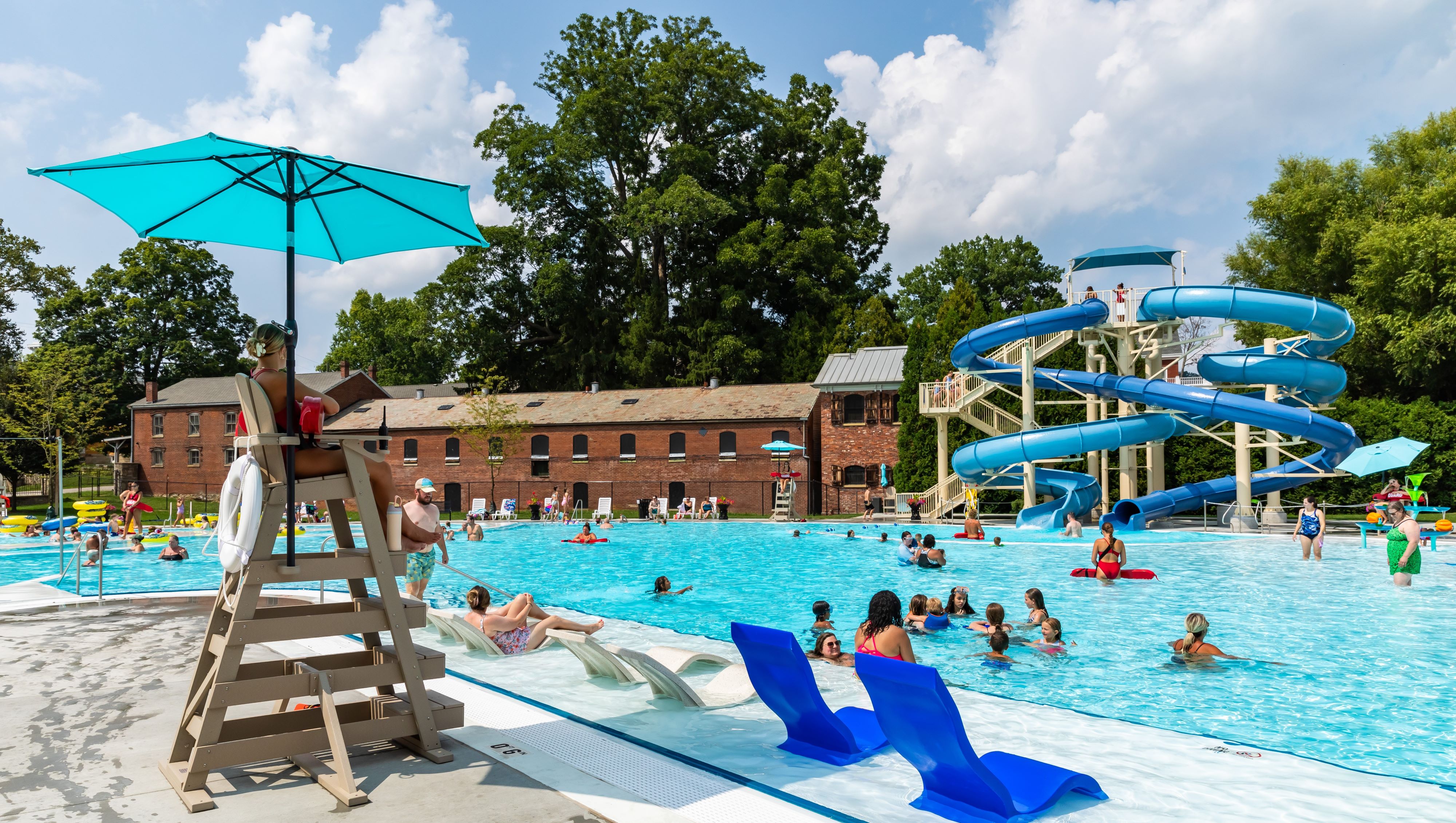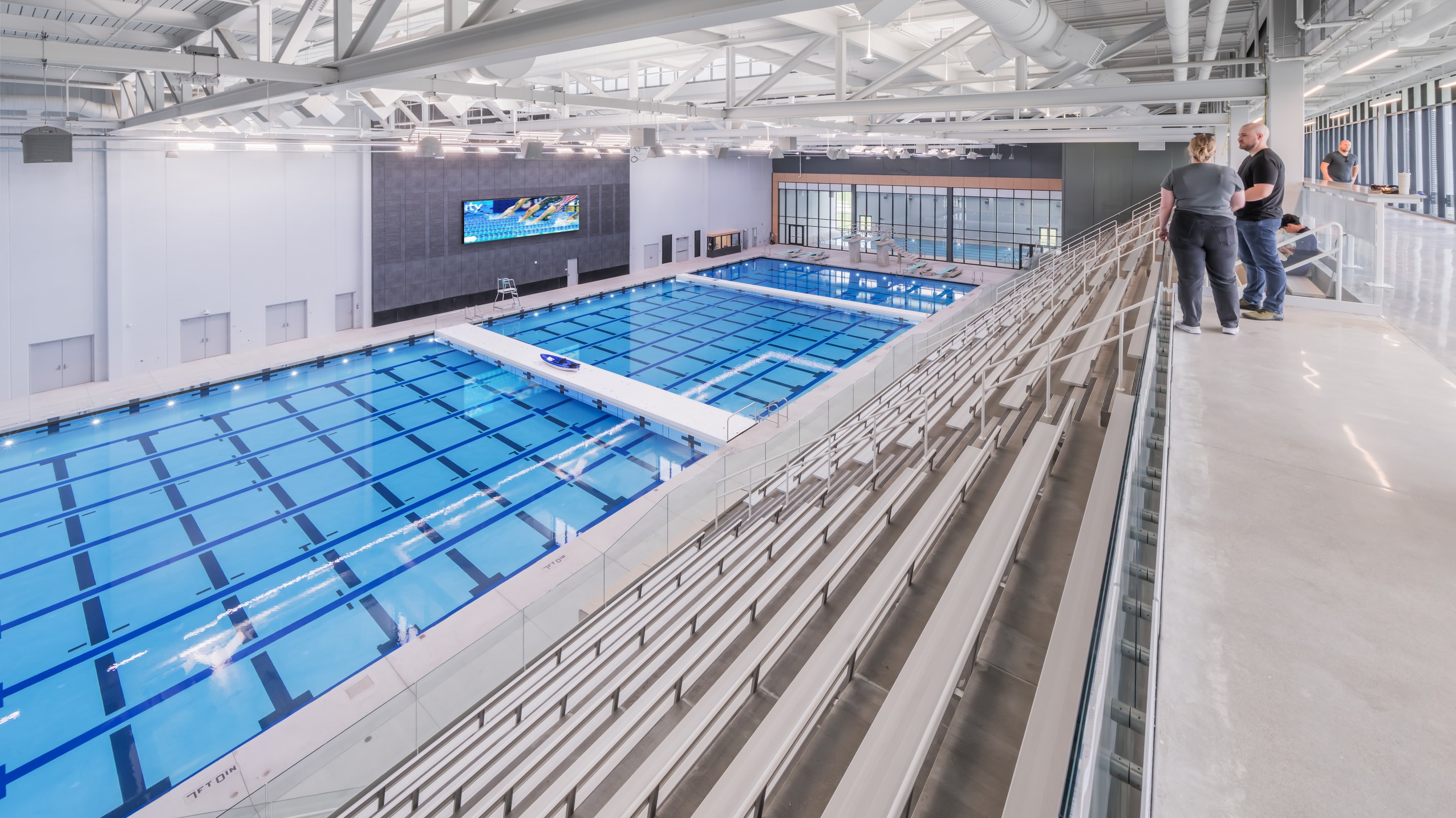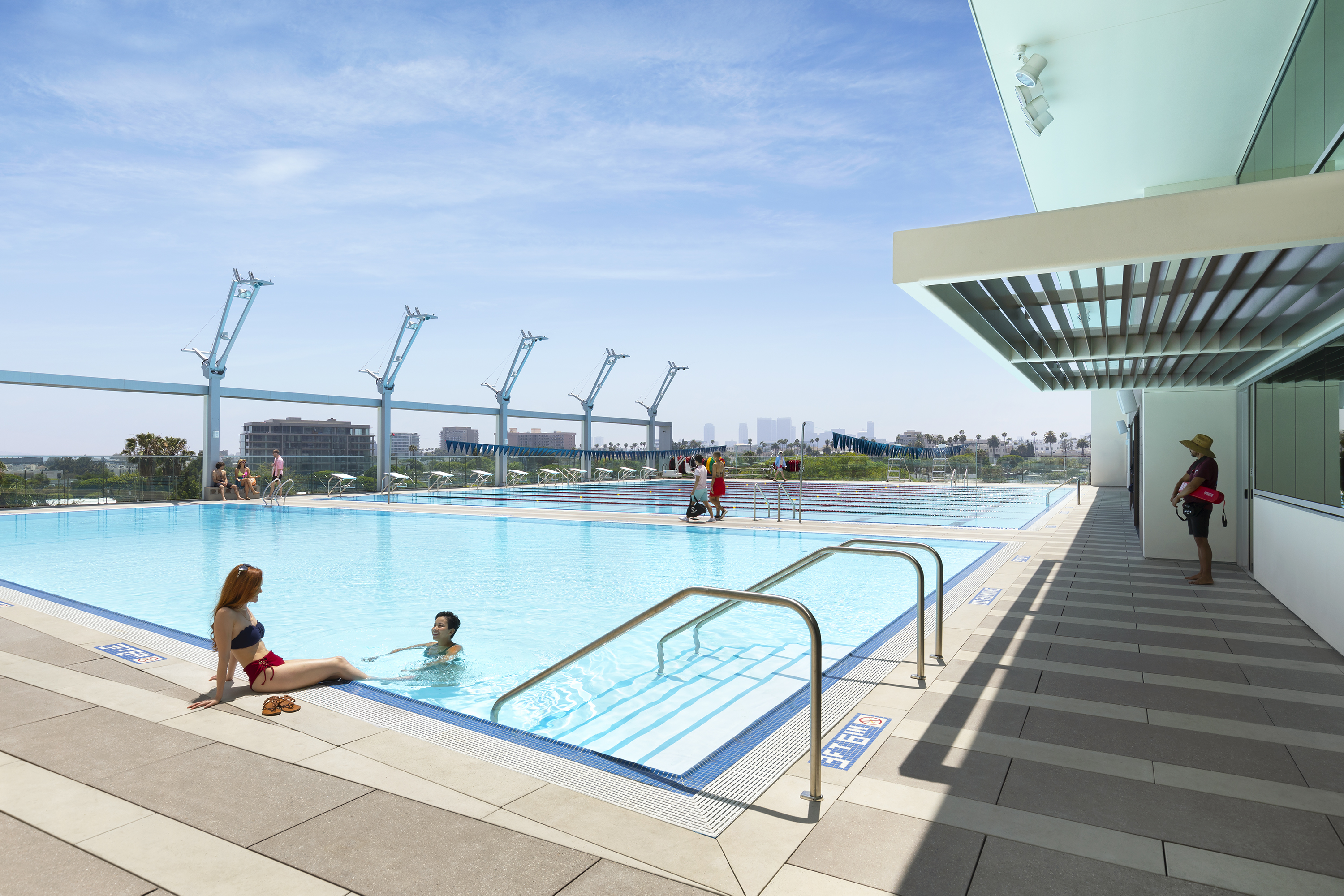The clients were looking for something small and intimate. “With the kids off to college, they wanted a private space just for the two of them,” says John Anderson, CEO/president of Anderson Pools & Spas. “They needed a little water to cool off in and a hot tub nearby for relaxation.”
The aesthetics would be left to Anderson and his crew. The clients had worked with him in the past, so there was a level of trust. Their only request was that the pool/spa combination also include a waterfeature.
Thinking it through
The yard was exceptionally small, which helped the builder decide on a “spool,” so called because it wasn’t much bigger than the spa that would accompany it.
Confronted with such a confined area, Anderson contemplated how to make the most of the space.
“I came up with the idea of raising the whole thing 18 inches, so you can sit on the edge of the pool,” he says. “That made it unique.” The decision also consolidated sitting and swimming areas, and lent additional dimension to the tiny waterscape.
Using a symmetrical layout, Anderson crafted a design that mimics a classic garden fountain.
He placed a tiny waterfeature against the pool’s back wall. “If you had a whole lot of water [making noise] in such a small courtyard, you wouldn’t be able to hear,” Anderson explains.
The clients also wanted a place for potted plants. Anderson complied by designing various levels of hardscape, such as raised walls, deck and steps, to make the perfect platform for the containers. He used antique pavers on the surfaces, creating a natural look without the cost of stone.
A band of 3-by-3-inch, frost-proof, cobalt tiles were added around the pool’s circumference as a finishing touch.
Fitting in
With the design in place, the biggest challenge was getting the crew and equipment into the backyard.
“They live in a subdivision with small backyards and zero lot lines,” Anderson says. “The No. 1 challenge was that the streets were so narrow, it was nearly impossible to get a trailer of any kind back there.”
The crew was forced to take down a neighboring fence, remove sod and build a road leading to the backyard. A Bobcat — the biggest piece of equipment that would fit — was used to dig the hole. But there was no place to store the removed soil, so each load had to be carted out to an off-site truck.
The pool and hot tub shells were lowered into place with a small crane. As an added wrinkle, local building codes prevented digging within 5 feet of a neighbor’s house. “It made the available space even smaller,” Anderson recalls.
Because of the tight squeeze, all of the subsequent digging for plumbing and electrical work had to be done by hand.
The result was a private, tranquil retreat that made the most of the customers’ diminutive backyard.



